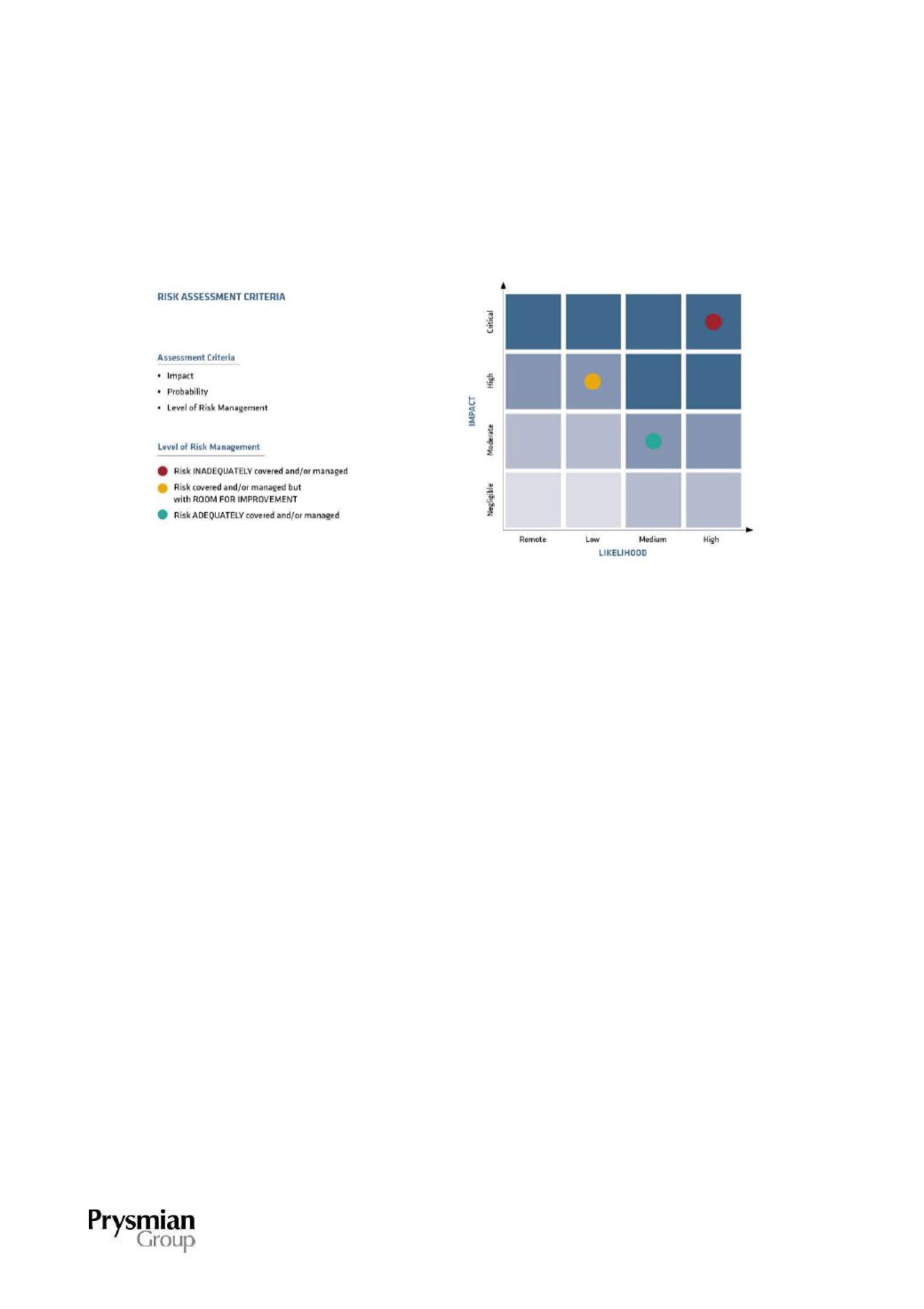

PRYSMIAN GROUP | DIRECTORS’ REPORT
90
The overall assessment must also take into account the future outlook for risk, or the possibility that in the
period considered the exposure is increasing, constant or decreasing.
The results of measuring exposure to the risks analysed are then represented on a 4x4 heat map diagram,
which, by combining the variables in question, provides an immediate overview of the risk events considered
most significant.
This comprehensive view of the Group's risks allows the Board of Directors and Management to reflect upon
the level of the Group's risk appetite, and so identify the risk management strategies to adopt, meaning the
assessment of which risks and with what priority it is thought necessary to improve and optimise mitigation
actions or simply to monitor the exposure over time. The adoption of a particular risk management strategy,
however, depends on the nature of the risk event identified, so in the case of:
external risks outside
the Group's control, it will be possible to implement tools that support the
assessment of scenarios should the risk materialise, by defining the possible action plans to mitigate
impacts (eg. continuous monitoring activities, stress testing of the business plan, insurance cover,
disaster recovery plans, and so on);
risks partially addressable
by the Group, it will be possible to intervene through systems of risk
transfer, monitoring of specific indicators of risk, hedging activities, and so on;
internal risks addressable
by the Group, it will be possible, as risks inherent in the business, to take
targeted actions to prevent risk and minimise impacts by implementing an adequate system of
internal controls and related monitoring and auditing.
ERM is a continuous process that, as stated in the ERM Policy, forms part of the Group's three-year strategic
and business planning process, by identifying potential events that could affect sustainability, and is updated
annually with the involvement of key members of management.
In 2015 this process involved the main business/function managers of the Group, allowing the most
significant risk factors to be identified and assessed; the main information emerging from this process, along
with the strategies adopted to mitigate the impacts, are reported in the following paragraphs. In parallel, an

















